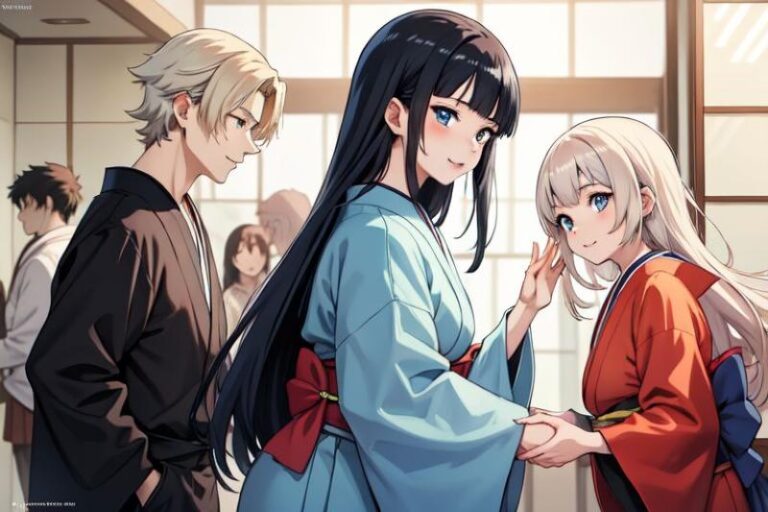- MozSaad
- April 17, 2024

Common Greetings when you meet people
Lesson 1: Common Greetings
Japanese greetings are an essential part of daily communication and social etiquette. Here are three of the most common greetings based on the time of day:
Essential Phrase
- こんにちは (Konnichiwa):
- Meaning: “Konnichiwa” is a versatile greeting used during the daytime, typically from late morning until early evening.
- Usage: It is equivalent to saying “Hello” or “Good day” in English. You can use it when you meet someone, enter a room, or start a conversation during the day.
- おはよう (Ohayou):
- Meaning: “Ohayou” means “Good morning.”
- Usage: This greeting is used in the morning, typically around 10 or 11 AM. It’s a polite way to wish someone a good morning, and you can say “Ohayou gozaimasu” for a more formal version.
- こんばんは (Konbanwa):
- Meaning: “Konbanwa” translates to “Good evening.”
- Usage: You can use this greeting from early evening until late at night when it’s dark outside. It’s the Japanese way to say “Good evening” when you meet someone or enter a place.
Remember that politeness is highly valued in Japanese culture, so adding “お” (o) or “ご” (go) before these greetings makes them more formal and respectful. For example, “おはようございます” (Ohayou gozaimasu) or “こんばんは” (Konbanwa) can be made more polite by saying “おはようございます” (Ohayou gozaimasu) or “こんばんは” (Konbanwa) instead.
Dialogue Between Sakura and Aki.
Setting: At the campus. In this dialogue, Aki says hello to Sakura.
Sakura: こんにちは。(Konnichiwa.) – “Hello.”
Aki: おはよう。(Ohayou.) – “Good morning.”
In the evening after school
Aki: こんばんは。(Konbanwa.) -“Good evening.”
Teacher: さようなら (Sayōnara.) -“Goodbye.”
Recall: The Japanese phrase and understand the English translation
1 | こんにちは。 |
| Hello |
|
|
2 | おはよう |
| Good morning. |
|
|
3 | こんばんは |
| Good evening. |
| |
4 | さようなら |
| Goodbye |

